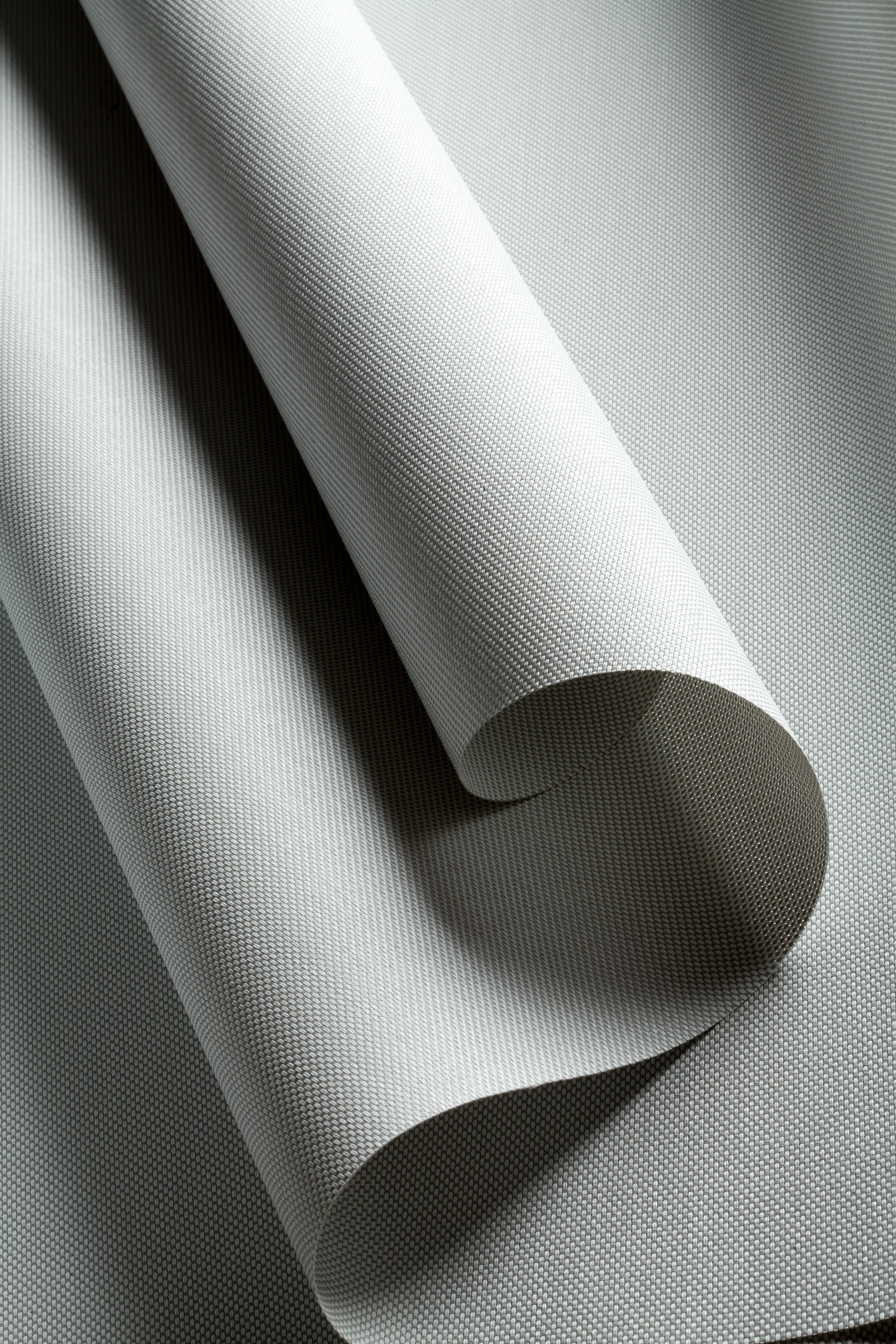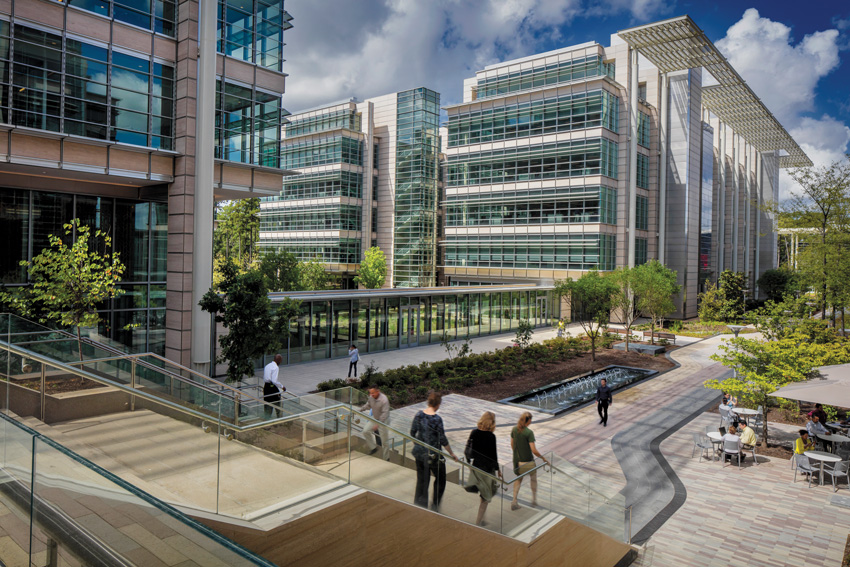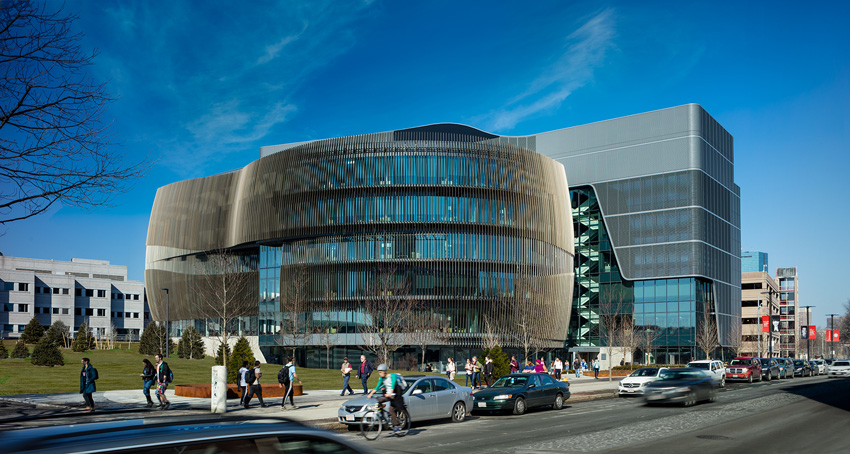Green Building with Automated Shading Systems
WELL Building Standard
In 2014, the International WELL Building Institute (IWBI) launched the WELL Building Standard version 1.0 (WELL). This standard marks the first sustainable guideline dedicated to enhancing people’s health and well-being through the built environment. Developed with the input of physicians, scientists, and industry professionals, this performance-based certification system combines best practices in design and construction and evidence-based medical and scientific research to create buildings that help people work, live, perform, and feel their best.
WELL organizes its performance criteria into seven categories considered relevant to the health and well-being of building occupants. They are: air, water, nourishment, light, fitness, comfort, and mind. These categories form the seven concepts of the WELL Building Standard. Each concept contains criteria labeled as either a mandatory precondition that must be met for a project to earn any level of WELL certification or an optional optimization that may be met to earn higher levels of certification.
There are three levels of WELL Building certification: Silver, Gold, and Platinum. A Silver certification indicates that the project has met 100 percent of the preconditions. A Gold certification is earned by projects that meet 100 percent of the preconditions and 40 percent of the available optimizations. The highest level of certification, Platinum, is reserved for projects that satisfy all preconditions and at least 80 percent of the possible optimizations.
As of September 2017, there were more than 530 WELL-certified projects, representing over 100 million square feet of WELL-certified space in the world. While adoption is voluntary, trends of putting people first and creating sustainable and healthy workspaces are newsworthy and notable in today’s culture. As a healthy building standard gains traction in the design and construction community, automated shading systems emerge as powerful tools to satisfy these wellness-minded sustainable criteria.
AIR 04: VOC Reduction (Precondition)
This credit is focused on minimizing the effect of the VOCs found in building materials on indoor air quality. To that end, this credit requires that the VOC emissions of at least 95 percent (by cost) of all newly purchased furniture and furnishings meet VOC emissions limits set by a few specific standards. Products that have received GREENGUARD Gold certifications can be used as an accepted equivalent to the identified standards. Window shade fabrics that are GREENGUARD Gold certified comply with this requirement and will contribute toward reaching the 95 percent threshold necessary to satisfy the precondition.

Photo © Lutron Electronics
Certain shading fabrics can contribute toward meeting environmentally friendly materials thresholds, such as shading fabric made from recycled water bottles (shown here).
LIGHT 56: Solar Glare Control (Precondition)
A direct view of the sun or intense daylight at the window can cause glare. Glare occurs when an element in the visual field, either a light source or the reflection of a light source, is significantly brighter than everything else in the surrounding visual environment. When the difference in illuminance levels is too great, the eye cannot effectively adapt and the resulting eye strain leads to headaches and fatigue. The intent of this credit is to avoid glare from the sun by blocking or reflecting direct sunlight away from occupants.
It should be noted that even if automated shading systems are outside of a project budget, quite a few sustainable design credits may still be realized with the inclusion of manual shades at the window. This credit is one example. It requires either controllable or automatic window shading systems be provided to protect the interior and occupants from glare conditions. Manual shading systems may also support sustainable criteria by featuring environmentally friendly fabric and components.
LIGHT 60: Automated Shading and Dimming Controls (Optimization)
Designing with daylight can be somewhat of a double-edged sword. While studies have shown that exposure to useful daylight levels helps to regulate circadian rhythms, improve mood and satisfaction, and create interior spaces where people learn and heal faster, exposure to glare causes discomfort and damages productivity. The previous credit, LIGHT 56, enables people in the building to prevent glare exposure by lowering a shade, either manually or automatically. Unfortunately, studies, such as “Measuring the Daylighting Impact of Automated and Manually Operated Shades” authored by Mudit Saxena, principal, Vistar Energy, and funded by Pacific Gas and Electric Company, through the California Emerging Technologies Coordinating Council, have concluded that the unpredictable control of manual shades and the likelihood that the shades will be pulled down even when diffuse, ambient daylight conditions exist undermines the original intent of the design and diminishes the positive impact that useful daylight can have in a space. The intent of this optimization credit is to encourage the use of automated shading systems so that the interior is protected from glare when direct and overly intense daylight conditions exist, and usable daylight is allowed into the building whenever it is available.

Photo © Joe Aker|AkerImaging
The Exxon Mobil Headquarters in Houston earned LEED Gold certification and features approximately 10,000 motorized shades, making it the largest motorized shading installation in the world.
Beyond automated shading, this credit encourages lighting systems to be equipped to reduce lighting energy use. The credit specifically requires that the lighting system be able to dim lights or turn them off when the space is unoccupied or when sufficient daylight is available. Because automated shading systems are designed to maximize the amount of usable daylight in the interior, the potential energy savings can be significant. In fact, coordinating the presence of electric light and daylight in a space equipped with automated shading systems can reduce daytime lighting energy usage by 65 percent or more.
LIGHT 62: Daylight Modeling (Optimization)
This credit mirrors the LEED v4 Daylight credit, which requires that daylight modeling be completed to demonstrate that the space satisfies certain daylighting objectives in terms of the spatial daylight autonomy (sDA) and annual sunlight exposure (ASE) it is designed to receive. Automated shades successfully increase the sDA value of a space.
COMFORT 74: Exterior Noise Intrusion (Precondition)
The intent of this credit is to reduce acoustic disruptions by limiting external noise intrusion. It specifies that the average sound pressure level from outside noise intrusion not exceed a specific level depending upon the type of project. (For example, 50 dBA is the maximum level of noise intrusion allowed for businesses). Some shade fabrics help spaces meet these external noise intrusion thresholds by absorbing sound waves. Look for fabrics that have published a noise reduction coefficient (NRC). NRC values range between 0 and 1, with 1 representing a surface that provides perfect absorption.
MIND 88: Biophilia I—Qualitative (Precondition)
The WELL Building rating system also requires a qualitative narrative, written by the design team, to explain how the project nurtures the innate human-nature connection. Automated shading systems contribute to this narrative in two ways. The automated system ensures that whenever glare-free conditions exist, the window shades are raised, providing an unobstructed view of the outdoors. Shade fabrics also offer the distinct ability to preserve a view to the outdoors, even when deployed to prevent glare and solar heat gain. Unlike louvers and blinds, which create a total visual barrier to manage daylight, the weave of certain solar fabrics allows the outside view to be visible through the shade, while still effectively diffusing, absorbing, and reflecting the harsh image of the sun’s orb or overly intense daylight.
The abilities to maximize the daily exposure to unobstructed outdoor views and manage daylight while preserving a view to the outdoors are two good points to include in the narrative required to satisfy this Biophilia I criteria.
The Living Building Challenge
The Living Building Challenge (LBC) is a green building certification program dedicated to creating buildings that are regenerative and self-sufficient. This creates an impressive distinction between green building rating systems such as LEED, which seek to make buildings function more efficiently than required by current energy standards, and the LBC vision, which is to create buildings that produce more energy than they use and collect and treat all water on-site.
The LBC is organized into seven performance areas called Petals. They are: Place, Water, Energy, Health + Happiness, Materials, Equity, and Beauty. Each Petal is sub-divided into Imperatives. There are up to 20 Imperatives in the Living Building Challenge, depending upon whether the project is considered a building, renovation, or landscape/infrastructure typology.
The program offers three unique certification pathways: Petal certification, Living Building certification, or a Zero Energy certification. Petal certification requires that the project satisfy all of the Imperatives in at least three of the seven Petals. One of the three satisfied Petals must be either Water, Energy, or Materials. In addition, Imperative 01 Limits to Growth and Imperative 20 Inspiration and Education must be achieved for Petal certification. For a project to earn Living Building certification, it must meet all Imperatives assigned to the project typology. Projects that earn the Zero Energy certification generate all necessary energy on-site without combustion.
Another distinguishing feature of LBC is that certification is based on actual performance and not simulation or modeling. All projects have a twelve-month performance period and are audited by a third party before they are awarded a certification.
Automated shading systems can contribute to satisfying three of the 20 LBC Imperatives.
Energy Petal: Imperative 06 Net Positive Energy
This Imperative requires that 105 percent of the project’s energy needs be supplied by on-site renewable energy on a net annual basis, without the use of on-site combustion. Projects must provide on-site energy storage for resiliency. This Imperative requires that projects optimize system efficiencies and generate their own energy.
Automated shading systems (working in coordination with the lighting system) offer the optimal solution for minimizing the use of electric lights and mitigating solar heat gain, while maintaining a connection between building occupants and the exterior space. While this represents only part of the larger solution necessary to achieve this objective, being able to significantly reduce the lighting and HVAC load on a project is a solid step in the right direction.
Health + Happiness Petal: Imperative 08 Healthy Interior Environment
The intent of the Health + Happiness Petal is to create spaces that offer the fundamental environmental conditions necessary to create robust, healthy interior environments. There are three Imperatives within the Health + Happiness Petal. Imperative 07 Civilized Environment requires that every regularly occupied space have operable windows that provide access to fresh air and daylight. Imperative 08 Healthy Interior Environment is focused on providing good indoor air quality. Imperative 09 Biophilic Environment is dedicated to nurturing the innate human/nature connection.
Automated shading systems can contribute toward supporting each of these Imperatives, but it most directly supports Imperative 08 Healthy Interior Environment. Selecting shade material that has been GREENGUARD Gold certified is a straightforward way to ensure that the VOC emissions from the shade fabric meet the requisite threshold.

Photo © Warren Jagger Photography
Automated shading systems can contribute toward meeting indoor environmental quality, energy efficiency, and environmentally friendly materials thresholds incorporated into many of the green building systems used today.
Materials Petal: Imperative 10 Red List
This Imperative contains a list of 22 materials and chemicals recognized as the worst-in-class materials prevalent in the building industry. Referred to as the Red List, it includes: asbestos, chromium VI, mercury, and polyvinyl chloride (PVC). In order to satisfy this Petal, the project cannot contain any of the materials or substances identified on the Red List. Selecting solar shades with HPDs and full disclosures of all intentionally added ingredients offers designers the necessary transparency to ensure that the specified solar fabrics support this sustainable goal. PVC-free shade materials often comply with this Imperative.
ANSI/ASHRAE/USGBC/IES Standard 189.1-2014
The ANSI/ASHRAE/USGBC/IES Standard 189.1: Standard for the Design of High-Performance Green Buildings Except Low-Rise Residential Buildings (189.1) is a green building standard, not a green building rating system. As a standard, 189.1 is designed to be adopted by a state or local jurisdiction and enforced by building officials and inspectors, just as the various versions of the ANSI/ASHRAE/IES 90.1 and IECC energy standards are used. In 2010, the U.S. Army officially adopted 189.1, and all new building construction and major renovation projects must be designed in compliance with this green building standard.
This national model green code is comprised of minimal requirements designed to improve the environmental and health performance of building sites and structures. The areas upon which it focuses are similar to those found in LEED and other green building rating systems, including: energy efficiency, indoor environmental quality, water use efficiency, site sustainability, materials and resources, and construction and operation plans.
Automated Shades the Alternative to 7.4.2.5 Permanent Projections
In ASHRAE 189.1-2014, automated solar shades are recognized as an alternative compliance path for requirement 7.4.2.5 Permanent Projections, which requires that vertical fenestration be shaded with permanent projections on the west, south, and east in certain climate zones. Automated shades are programmed to precisely position solar shades at the optimal height throughout the day to defend the interior against solar heat gain and glare. No manual manipulation is necessary, although localized manual control is offered to allow for a temporary override.
While automated shading systems are considered a suitable and compliant solution, manual blinds and shades are not. Without the ability to program and automate the position of the daylight management apparatus, the manual solutions must be modeled in the worst-case scenario, which would be completely retracted, so that the shades offer no assistance in the mitigation of solar heat gain or glare prevention. When modeled in this fashion, the manual shades and blinds do not meet the basic levels of daylight management satisfied by the static yet deployed permanent projections.
8.4.1.3 Office Space Shading
Provision 8.4.1.3 Office Space Shading requires that each west-, south-, and east-facing facade be designed with a projection factor of at least 0.5. Installing automated shading devices on these vertical fenestrations will also satisfy this requirement.
The Next Version of 189.1
It should be noted that, in the next iteration, 189.1 will be combined with the International Green Construction Code (IgCC) written by the International Code Council (ICC) and referred to as “IgCC powered by 189.1” or the 2018 version of IgCC (2018-IgCC). This new and integrated green building standard is expected to be published in the summer of 2018.
A preliminary review of this new document reveals that shades will be able to satisfy more sustainable criteria points in the 2018 green building standard, including requirements concerning glare control and daylight modeling for metrics like sDA.
As the practice of sustainable design continues to evolve, designers will achieve new levels of green building performance. Spaces will become more comfortable, healthy, productive, environmentally friendly, and profitable. Automated shading systems and sustainable shade fabric will continue to serve as powerful tools in the designer’s arsenal for maximizing the exposure to glare-free daylight, mitigating solar heat gain, preserving views to the outdoors, and contributing toward satisfying materials thresholds. Whenever a window is placed in a facade, add an automated shade to make it more sustainable.
Jeanette Fitzgerald Pitts has written dozens of continuing education articles for Architectural Record covering a wide range of building products and practices.

|
Lutron Electronics, headquartered in Coopersburg, Pennsylvania, designs and manufactures energy-saving light controls, automated window treatments, and appliance modules for both residential and commercial applications. Its innovative, intuitive products can be used to control everything from a single light to every light and shade in a home or commercial building. www.lutron.com |








